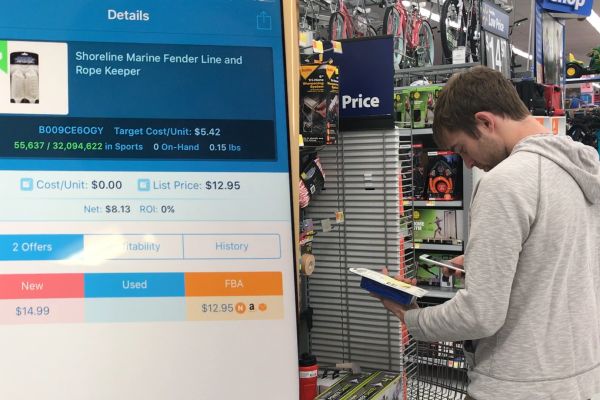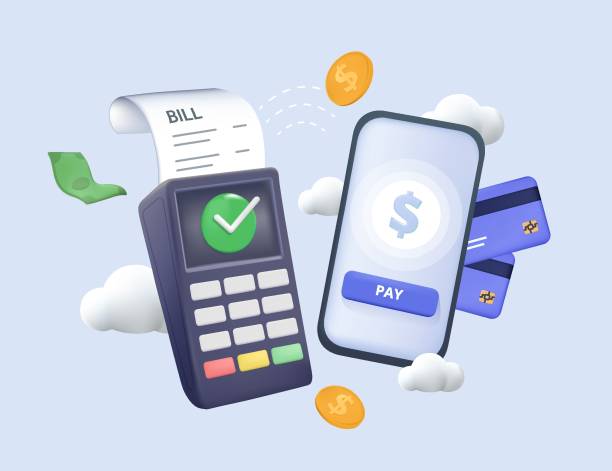Have you ever dreamed of making millions by simply shopping at your local Walmart? It might sound too good to be true, but Ryan Grant, a 30-year-old entrepreneur, has turned this dream into a reality. By buying discounted items from Walmart and other local retailers and then selling them on Amazon, Grant has built a thriving business that generates millions in revenue annually. Here’s an in-depth look at how did a man makes millions selling Walmart on Amazon, Let’s Find out.
From Accountant to Entrepreneur
Ryan Grant’s journey to entrepreneurial success began in a rather unlikely place: an accounting job in Minneapolis. Despite having a stable career, Grant felt unfulfilled. “Pretty early on I realized I wasn’t in the career path that I wanted to be on,” he recalls. His search for a more fulfilling and flexible career led him back to a side hustle he had used to make ends meet in college.
As a student at Winona State University, Grant organized textbook buyback events. He bought textbooks from students, listed them on Amazon, and shipped them to customers across the country, making up to $10,000 a year. The process was time-consuming, but it gave him a taste of the potential of online retail.
The Leap to Full-Time Selling
In September 2013, Grant made a bold decision: he quit his accounting job to focus on flipping products full-time. Initially, he spent 30 hours a week scouring clearance aisles at Walmart, Target, and other retailers, looking for items he could resell at a profit. Using the Amazon Seller app, he could quickly determine the potential profit on each item he scanned.
His efforts paid off. Within a few months, he was making as much money reselling products as he had in his accounting job. By December 2013, he had earned $9,000 in profit on over $25,000 in sales. This early success boosted his confidence and confirmed that he was on the right path.

Scaling Up the Business
As Grant’s business grew, so did the challenges. His duplex overflowed with boxes destined for Amazon warehouses. To manage the increasing volume of inventory, he rented a 725-square-foot warehouse in the spring of 2014. He also hired his first employee, a friend, to help with shopping and preparing shipments.
With more hands on deck, Grant’s business continued to expand. By leveraging seasonality and purchasing discounted items after holidays, he maximized his profits. For instance, he bought discounted Halloween candy and Christmas decorations, which sold well even out of season.
Hitting Major Milestones
By 2017, Grant’s business was seeing over $200,000 in monthly sales. His team grew, and he moved to a larger warehouse to accommodate the increasing inventory. The business’s success was driven by Grant’s ability to identify high-demand items and scale up operations efficiently.
Grant’s approach evolved. Initially focused on retail arbitrage—buying discounted items from retailers—he expanded into wholesale arbitrage. This involved buying products in bulk directly from brands or manufacturers. This strategy allowed him to grow the business faster, as more brands were eager to partner with him.

The Financials
Grant’s business is a testament to the power of reinvestment. He initially took a salary of around $150,000 per year but later reduced it to a base salary of about $60,000. His total compensation, however, includes regular distributions of the company’s profits, allowing him to reinvest heavily into the business. This approach has facilitated rapid growth and set the stage for long-term success.
By 2019, Grant expected his business to reach $8.5 million in annual revenue, a 45% increase over the previous year. His focus on wholesale arbitrage has been a significant driver of this growth, enabling him to secure more lucrative partnerships with brands.
Lessons Learned and Mistakes Made
Grant’s journey hasn’t been without setbacks. A faulty nail filing product for dogs once cost him $6,000 and temporarily suspended his Amazon seller account. He also incurred fees for products that failed to sell and accumulated in Amazon’s warehouses. Despite these challenges, Grant remained undeterred and learned valuable lessons from each experience.
Sharing the Knowledge
Grant now dedicates much of his time to educating others about online retail arbitrage. Through his website, he offers consulting services and e-commerce classes, hoping to help others achieve the same independence he has found. “I think anyone can do it if they’re willing to put in the work,” he says.

Getting Started
If you’re inspired by Grant’s story and want to try your hand at online retail arbitrage, here are some steps to get you started:
- Start Small: Begin by selling items you already own but no longer use on platforms like Facebook Marketplace, Craigslist, eBay, or Amazon.
- Reinvest Profits: Use the profits from your initial sales to buy discounted items from garage sales, thrift stores, or retail clearance aisles.
- Use Tools: Utilize tools like the Amazon Seller app to scan items and determine their potential profitability.
- Scale Up: Gradually increase your investment and consider hiring help as your business grows.
- Learn from Mistakes: Expect to make mistakes along the way and learn from them to improve your business strategy.
Final Thoughts
Ryan Grant’s success story is a powerful reminder that anyone can achieve financial independence with hard work, dedication, and willingness to take risks. His journey from an unfulfilling accounting job to a multimillion-dollar business owner is an inspiration to aspiring entrepreneurs everywhere. So, if you’ve ever dreamed of making a fortune by flipping products online, take a page from Grant’s book and get started today. As he advises, the key is to take that first step and let the momentum build from there.












